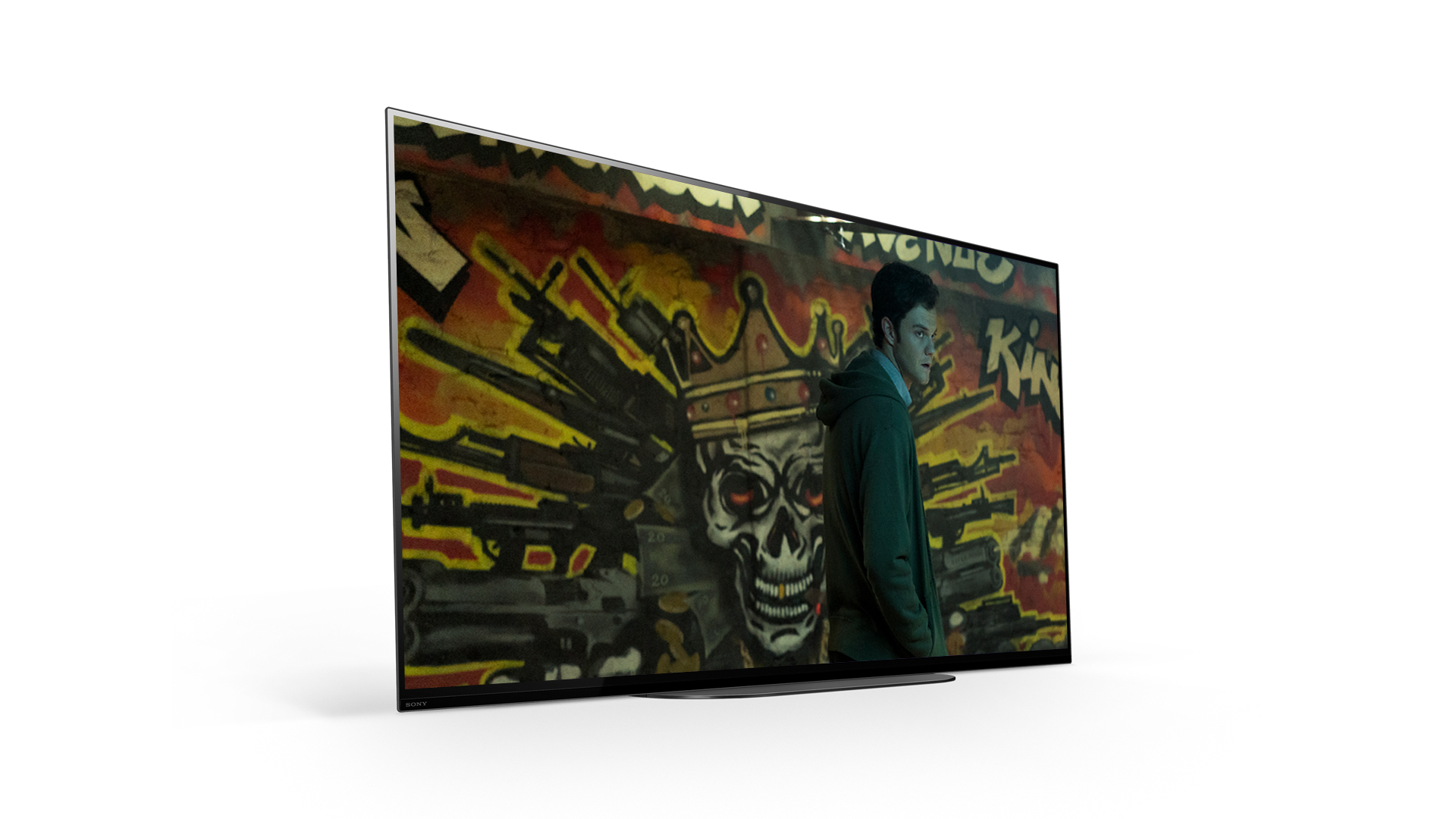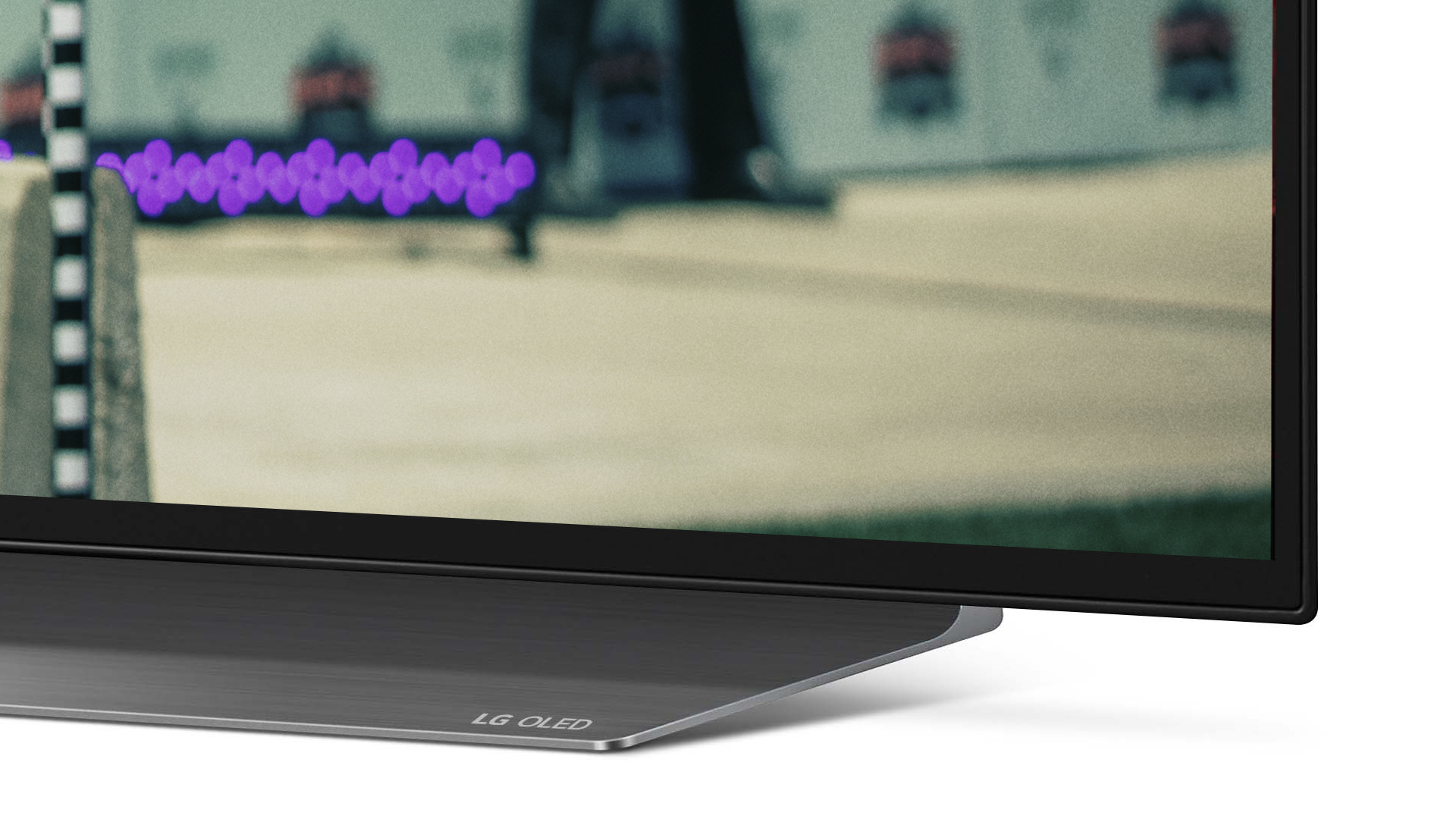Sony KD-48A9 vs LG OLED48CX: which 48-inch OLED should you buy?
Which is the best 48-inch OLED TV?

Whether you should buy the Sony KD-48A9 or LG OLED48CX 48-inch OLED is as difficult a decision as you'll find in the TV world. Both of these OLEDs are utterly superb with a total of 10 review stars between them. So, which should you buy, the Sony KD-48A9 or the LG OLED48CX?
We've been waiting for 13 years for OLED TVs to reach this medium panel size. They started tiny. Then they went big, with 55in and 65in the norm. Finally, they're available in a size that's much more practical for many people.
But just because these 48-inch OLEDs are smaller, it doesn't mean they're cheaper. These are more or less the most expensive sub-50-inch TVs you can buy. All the more reason to do your research and choose the right one for you.
These are some seriously finely-tuned middleweights. They're super-punchy and they're pin-sharp. This one's going the distance. Seconds away, round one...
Sony KD-48A9 vs LG OLED48CX: price

At launch, there was £300 in it, but that gap has now closed slightly, to £220, with the LG OLED48CX currently priced at £1479 and the Sony KD-48A9 coming in at £1699.
That's not a huge gap but it's not inconsiderable, either. After all, £220 goes a fair way towards the cost of a handsome soundbar (over halfway to a Sonos Beam, in fact) or will make a modest dent in a speaker package.
Ultimately, the LG wins on price, but be sure to read on and establish whether the Sony is worth paying more for. And keep a close eye on prices in case they change in the future. You'll see the lowest current price for both TVs below.
The latest hi-fi, home cinema and tech news, reviews, buying advice and deals, direct to your inbox.
**Winner** LG OLED48CX
Sony KD-48A9 vs LG OLED48CX: design and build

As has been well documented over the years, OLED panels are super-thin, but TVs are more than just their displays. There are speakers and connectors and other computational areas to house, and that means that both of these sets are bulkier than one might expect. The LG OLED48CX measures 4.7cm at its thickest point, the Sony is a much heftier 6cm.
Still, it's probably the parts facing us that are of more concern. Neither has quite an edge-to-edge display but the bezels on each are very thin. It's probably the stand that makes the most difference. The one on the LG is considerably wider which might be worth considering if you've got narrow furniture.
The Sony's pedestal gives it a footprint of just 47cm, but it also holds the TV so low that there's only 5mm between the bottom of the screen and the surface upon which it's placed. Any soundbar positioned at its feet will cut off a good chunk of the picture.
The only other design consideration is the remote control. Both are perfectly decent but the LG's offers gesture use, which some people find exceptionally useful and others find a little annoying.
It's pretty much a case of swings and round-a-bouts here. Both TVs are very smart and stylish indeed.
**Draw**
Sony KD-48A9 vs LG OLED48CX: features

Both of these TVs feature the top picture processors that their respective companies have to offer.
For the LG, it's the third generation version of the Alpha 9, with features such as AI Picture Pro for improved sharpness, and AI Sound Pro for a better surround sound experience.
It has Dolby Vision HDR support as well as Dolby Vision IQ which is designed to tailor the picture to the amount of ambient light in your room.
Sony’s X1 Ultimate processor, meanwhile, offers advanced features such as Object-Based Super Resolution, which is designed to intelligently analyse and enhance the definition of individual objects in an image. There's also an improved version of Object-Based HDR Remaster, which applies a similar approach to contrast. Pixel Contrast Booster's aim is to enhance colour and contrast in bright areas of the image.
In terms of UI, LG's webOS would usually have it but the 2020 implementation is missing a few key apps. The BBC iPlayer app has thankfully now been added, but ITV Hub, All4 and My5 are still absent. There's no BT Sport either but Sky Store and Now TV are there. AirPlay 2 does help when it comes to casting other content from an Apple device, though.
Interestingly, Sony has done better with its version of Android TV than in previous years. It's augment the stock app selection with a few other well-placed services. It does offer the full suite of catch-up apps, Now TV and BT Sport, and Apple TV has been added since launch, too. For anything else, the Sony KD-48A9 features both AirPlay 2 and Chromecast to help out.
Regardless of the app choice – which, after all, can be remedied with a comparatively cheap media streamer – webOS is still better to use than Android TV, which at times feels more like a source than the true core of the user experience.
More pertinent for many will be the ports. While both TVs have four HDMIs, only the LG offers officially certified HDMI 2.1 sockets that support 4K@120Hz, ALLM (Auto Low Latency Mode) and VRR (Variable Refresh Rate) – that's a big deal for gamers, particularly those who have got or are getting an Xbox Series X or PS5.
**Winner** LG OLED48CX
Sony KD-48A9 vs LG OLED48CX: picture quality

Both of these sets have superb picture quality. The LG is skewed slightly more towards black depth over dark detail. Nonetheless it's punchy and sharp but still smooth and natural. Whites are good and strong. Colours are lush and vibrant, and still realistic when it comes to producing skin tones.
LG has also made big gains in motion processing this year, and the 48CX is very much an example of that. All the same, if it's smooth action you want, then you won't find better than Sony.
The KD-48A9 comes with the company's incredible X-Motion Clarity and the results are staggering. It can smooth and sharpen motion without introducing any sickening artifacts; it's judder-free without looking fake.
It's not just with motion where it beats the LG either. The Sony is blacker, punchier and still manages to dig up more dark detail too. With the edge in sharpness as well, it delivers an even more engaging and three-dimensional image than its excellent rival.
Both of these OLEDs do a fabulous job of upscaling from lower quality content. The LG is even better at this than it's very good predecessors. It's clean and clear even at standard def. The Sony stays smooth, sharp and surprisingly vibrant no matter the source material.
While it's clear that the Sony has the edge for picture, it's important to note that both of these TVs produce the kind of deep blacks and crisp detail that have never before been available at this size. Viewing angles are practically perfect too.
**Winner** Sony KD-48A9
Sony KD-48A9 vs LG OLED48CX: sound quality

Sony's Acoustic Surface Audio technology gives the KD-48A9 a huge advantage over its rival. Actuators on the panel vibrate the screen to create sound. Combined with a built-in subwoofer on the rear, it makes for an audio performance that's a big step-up.
The sound is expressive and exciting with a sense of precision that makes dialogue clearer and more direct. Bass is firm and controlled. The audio and video are more spatially connected than with other TVs and it generates an excellent sense of atmosphere, too.
The sound system in the LG OLED48CX is much more standard fare, as TVs go. The 2.2ch, 40W speaker system has a little more grunt than the 25W arrangement in the Sony but, ultimately, far less class. It's still very respectable for the money. There's some clarity to the dialogue and the bass is sizeable if a bit flabby.
Spatial smarts are probably the LG's best sonic character. The AI Sound Pro tech helps to create a decent spread with an approximation of 5.1 audio and there's also Dolby Atmos virtualisation, just as you'll find with the Sony. The AI Acoustic Tuning feature will also help you to get the optimal sound profile for your room by analysing the acoustics of your space.
It's worth noting that the 48CX is a bit thinner sounding the 55in model. So, if testing in store, make sure the correct panel size is set up to try.
So, it's a clear win here for the more composed Sony OLED but do remember that if you want your experience to sound as good as these TVs look, then a dedicated sound system is the best way to go.
**Winner** Sony KD-48A9
Sony KD-48A9 vs LG OLED48CX: verdict
These are both brilliant five-star TVs and if this is what you're choice has come down, then you've already won. But we can only award this contest to one of these OLEDs and, in fact, we already have.
It was the Sony KD-48A9 that won Product of the Year out of all the TVs we reviewed for the 2020 What Hi-Fi? Awards. Its picture performance is sublime, its sonic skills are accomplished and its smart platform is substantial.
Granted it's more expensive than the LG but we believe that that extra outlay is more than worth what you get in return. Of course, that's not quite the bottom line. These things are rarely a one-size-fits-all solution.
The LG may be a better bet to pair with a soundbar and those looking to use their 48in OLED TV for gaming may well wish to go with the LG for its HDMI 2.1 features, particularly if you already have an external sound system in place anyway. Its picture performance is still excellent, even if it's not quite as stellar as that of the Sony.
**Winner** Sony KD-48A9
What Hi-Fi?, founded in 1976, is the world's leading independent guide to buying and owning hi-fi and home entertainment products. Our comprehensive tests help you buy the very best for your money, with our advice sections giving you step-by-step information on how to get even more from your music and movies. Everything is tested by our dedicated team of in-house reviewers in our custom-built test rooms in London, Reading and Bath. Our coveted five-star rating and Awards are recognised all over the world as the ultimate seal of approval, so you can buy with absolute confidence.

